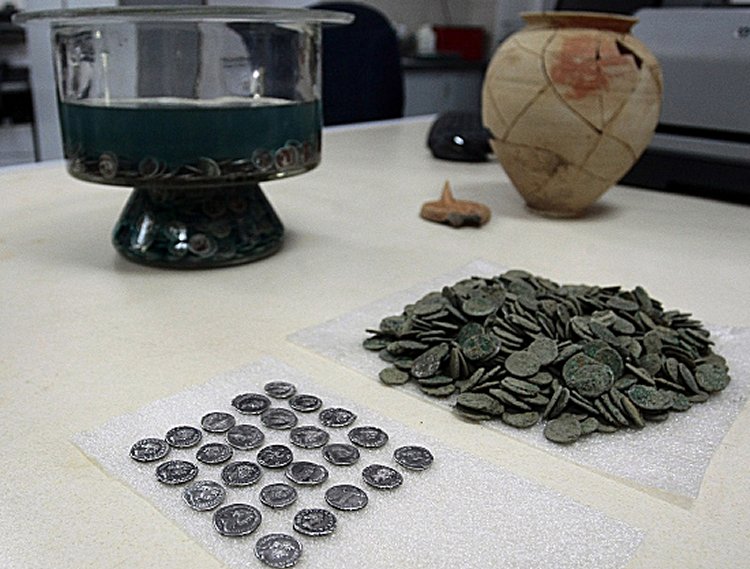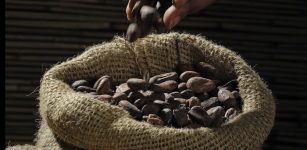Bulgarian Archaeologists Find Nearly 3000 Coins In Clay Pot At Sofia Dig
AncientPages.com - A treasure of 2,976 silver Roman coins from the 1st-2nd century AD has been discovered by archaeologists during the excavations of the ruins of the Ancient Thracian and Roman city of Serdica in the downtown of the Bulgarian capital Sofia.
The silver coin treasure has been found hidden inside a ceramic vessel with a lid in the structures from Ancient Serdica which are being excavated on the square near the St. Nedelya (“Holy Sunday) Cathedral and the Hotel Balkan (formerly the Sofia Sheraton) as part of the efforts for the further study of the Thracian and Roman city and its partial archaeological restoration, reports Archaeology in Bulgaria.
The treasure of silver coins is the largest collective coin treasure to have ever been found during the excavations of Ancient Serdica, Sofia Municipality has announced.
The coins in question were collected for a period of at least 100 years since the earliest ones are coinsof Roman Emperor Vespasian (69-79 AD), and the latest – coins of Emperor Commodus (r. 177/180-192 AD).

This treasure of almost 3,000 silver Ancient Roman coins from the 1st-2nd century AD has been found in a clay vessel during excavations of the ruins of ancient Serdica in the downtown of the Bulgarian capital Sofia. Photo: BGNES
The discovery of the Roman silver coin treasure from Serdica is especially interesting because on the outside of the ceramic vessel containing the coins its (last) owner scratched their name - Selvius Calistus, apparently a Roman citizen with a Greek surname.

The treasure of silver coins is the largest collective coin treasure to have ever been found during the excavations of Ancient Serdica, Sofia Municipality
Together with the ceramic vessel containing the Ancient Roman silver coins, the archaeologists have also found an ancient clay lamp, archaeologist Snezhana Goryanova, who is the deputy head of the excavations on the St. Nedelya Square, has told the Focus news agency.
“It is a very emotional moment to see that what you have found is not anonymous but was owned by a specific person who has a name and history. According to our colleague Sharankov, the name of this treasure’s owner was Selvius Calistus. It is also possible that the owner may have been a woman because some parts of the inscription are missing,” Goryanova explains.
Currently, the hoard is at the National Institute of Archaeology with Museum at the Bulgarian Academy of Sciences (BAN), where conservation works are being carried out.
Late, rthe finds will be exhibited in the future Museum of Sofia History which is to be formally opened on September 17, 2015, in the former public bath building no far away from the excavation site.
AncientPages.com
References:





















